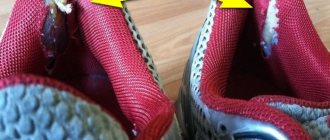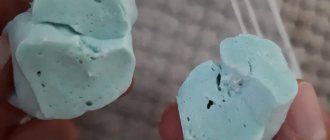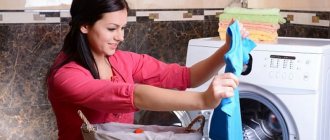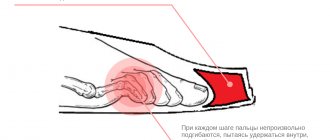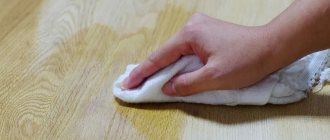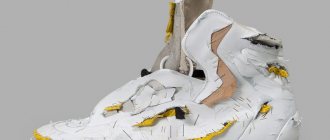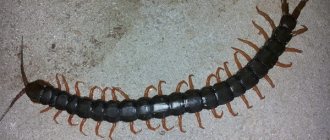August 30, 2020
Sneaker care
It happens that owners of sports shoes are faced with a problem: a new pair (just from the store) squeaks desperately. Or your old favorite sneakers suddenly begin to make unpleasant, sometimes very loud sounds. How to proceed? To begin with, understand the situation.
Creaking occurs when moving parts rub against each other. Or those that should be motionless, but have become unstuck, deformed, and started to dangle. First of all, you need to find out why your sneakers squeak when walking or running.
What could be the source of the sound? Anything. From bottom to top: raised tread, lower part of the sole, seams with the midsole, seams with the upper, insoles, stitched seams, heel lock, tongue, even laces when sliding in the eyelets.
Shoes squeak when walking: 5 effective ways to get rid of squeaking
Often, over time, shoes begin to creak or make strange sounds.
If this happens, many people try to just buy a new pair and forget about the problems. But what if the shoes are in excellent condition and their cost is high? It makes no sense to send such shoes to the shelf, especially since now there are several effective ways to get rid of squeaking.
The main thing is to find out the reason and strictly follow existing recommendations.
Why do shoes start to squeak?
Most often, it is new shoes that squeak until they wear out. However, quite often you can encounter situations when worn shoes begin to make “melodic” sounds, infuriating the owner. There are two common reasons why this may happen:
1) problem in the skin;
2) the problem is in the sole.
It is quite easy to determine the problem; when walking, you need to raise your leg and twist your foot. If the singing continues, then the problem is only in the skin. And if the shoes are silent, then it’s all about the sole, which has already lost its characteristics.
At the same time, everyone should understand that if the problem is in the skin, then you can try to restore it yourself. But if the sole produces unpleasant melodies, then you cannot do without a specialist with a special tool.
Important! The problems with shoes and other footwear made of genuine leather are listed above. Next there will be universal recommendations for all types of shoes, which can become a real discovery for every person.
Patent leather shoes squeak
1. Treat the area between the upper and sole with vegetable oil. After 8 hours, wipe off any residue.
2. Warm up your shoes with a hairdryer and lightly remember. After this, put on your shoes and walk in them for an hour.
3. In the evening, place your shoes on a wet cloth and leave them until the morning.
4. If a sharp sound occurs only when wearing shoes on bare feet, wear stockings, tights or footwear.
Universal methods to combat squeaking shoes
There are several most common methods that will help get rid of squeaks and various noises.
1. Sneakers, sneakers and other sports shoes. Here there is one simple recommendation: you need to take a wet cloth and put it inside your shoes overnight. The essence of the method is that moisture will help soften the shoes, so they will stop making various sounds.
2. Varnished material. If the shoes are patent leather, then the struggle is a little more difficult. It is necessary to wipe the front side with castor oil or heated drying oil. You can use other oils, as long as they are natural. After using the oil, you need to let the shoes sit for about a day so that it is completely absorbed. If after a day the oil still remains, you can safely remove it with a cloth or napkin.
3. Replacing insoles. Often the reason is trivial, and simply replacing insoles can solve the situation if squeaking occurs when walking. If the replacement does not help, then you will have to take the furniture to the workshop.
4. High temperature can help get rid of squeaking. It is enough to warm the soles of the shoes with a hairdryer for several minutes. If your shoes start to squeak in winter, you can safely put them on heating radiators for several hours.
5. If leather shoes squeak, just soften them. Now there are many universal products that can be bought in the store, the main thing is that everyone can choose the best one for themselves.
Creaking shoes is not a big deal. However, it is necessary to identify the problem; only in this case can we talk about an effective fight.
Reproduction of this material is prohibited.
Causes of shoes squeaking when walking
To solve the problem of squeaking while walking, it is important to understand the reasons that cause these unpleasant sounds.
- Violation of production technology. For example, pulling seams when sewing shoes or boots. Such shoes will make squeaking sounds when walking. It happens that some parts of the boots get small debris and various pebbles during production, and in the future they will also creak during wear.
- Poorly dried or wet shoes squeak a lot. Shoes soaked in foot sweat also make a sound.
- Poor quality heels and weak arch supports are a common cause of unpleasant sounds while walking.
- If the interior is of poor quality, or the insole is sewn carelessly, then it begins to move out, resulting in a creaking sound due to friction with the surface.
- It happens that the reason is hidden in the very material from which the upper part of the boots is sewn. Most likely, it was initially incorrectly selected and prepared for production.
Repairing Damage
If your shoes squeak when you walk, inspect them carefully - there may be cracks in the soles. An annoying sound sometimes occurs when the lower part of a shoe or sneaker begins to come off. To eliminate squeaking, use special shoe glue. When working with it, it is important to follow the instructions and be careful. It is necessary to glue only after thoroughly drying and degreasing the surfaces. After finishing work, leave the sneakers and boots for 24 hours until completely dry.
Is creaking a defect?
This is a controversial issue. The craftsmen who make shoes claim that a high-quality pair of shoes will never squeak while walking.
But mechanical damage is mainly considered defective, so boots or shoes that squeak are not an obvious defective shoe. It all depends on the store's policy.
If they are interested in advertising and increasing customers, they will most likely go to a meeting and exchange the shoes that make sounds while walking (if they have a receipt and comply with the warranty period) for another one, or return the money. But they may not do this, then they will have to submit the pair for examination. But it is not a fact that it will be decided in favor of the client. You should not hand over the goods yourself, as you will have to pay for the examination.
Therefore, it is better not to buy shoes or boots that squeak during fitting. But if a defect is discovered after purchase, you can try to get rid of it yourself.
How to make sports shoes “quiet”
Trying on removes 90% of possible troubles, so it is better to choose online stores that include this service with delivery. If it is not possible to try shoes before purchasing, only the reputation of the brand and store will serve as a guarantee of quality. It is not always possible to replace a creaking pair: in the absence of obvious defects (cracks, damaged cylinders), the manufacturer may refuse to exchange the goods.
To prevent sneakers from squeaking during wear, they must be properly cared for, following all recommendations for cleaning, drying, and storage.
Return to list of publications
How to determine the source of a squeak
Any type of footwear can creak: from boots to summer ballet shoes. But the methods for identifying the squeaky part are the same.
Before looking for the source of the problem, you need to thoroughly dry the couple inside and out. Then put it on and walk around.
Any part can make unpleasant sounds:
- sole;
- heel;
- leather upper;
- threads used to sew shoes together during production.
If while walking you cannot determine which part is creaking, then you need to take the shoe in your hands and slightly bend it several times.
The creaking of a heel is always accompanied by unpleasant sensations that are difficult to confuse with something else.
If the top part creaks, the sound will not stop when you rotate your foot in the air. If the sole is defective, the unpleasant sound disappears when the shoe stops touching a hard surface.
Check before purchase and identify the source of sound
It can be said that it is impossible to prevent shoes from squeaking. But you can avoid getting such a pair by doing a few simple steps right during the fitting and possible purchase. You need to put on new shoes and, without being embarrassed by anyone, start testing them.
The shoe test includes:
- squats;
- several jumps;
- walking around the store;
- rolls from toe to heel and in the opposite direction.
All this time you need to listen carefully. If there is a defect, then it will definitely manifest itself, most likely not in all manipulations, but it will definitely be in one.
Do not confuse the squeaks of the rubber sole when in contact with linoleum with defects.
To identify a creaking part in a shod pair, the same steps described above will help. Only this time they must be performed slowly in order to catch the moment and place of the sound. It will be good if an assistant goes with you. You move, and he listens. If this is not possible, and you have not identified a source of squeaking, to be sure, take the shoes in your hand and bend them in different directions.
What to do if your sneakers squeak when walking?
Sneakers squeaking when walking or playing sports is a fairly common occurrence.
There are cases of unpleasant sounds appearing after some time of use, but sometimes a new pair, bought just the other day in another country, creaks and there is no opportunity to exchange it. Buying quality sneakers will entail considerable expenses. Therefore, in order not to run for a new pair, try to use all the methods that are in the arsenal of home craftsmen to correct the situation. Moreover, you are not risking much - you are unlikely to wear shoes that squeak anyway. What to do?
Reasons for squeaking in sneakers
There can be a great variety of them: factory defects in the sizing of parts, uneven treads, dried out glue between the sole and the foot, the sole is slightly deformed or a cavity has formed in it, and many others . With the appearance of extraneous sounds, you need to understand each situation separately:
- to do this, put on both sneakers and walk on different surfaces: laminate, asphalt, soft carpet;
- analyze the sounds you hear to determine the source;
- remove the “sick” shoe and carefully examine the area that is creaking;
- if it is from the outside, then use a flashlight to see everything in detail;
- if it doesn’t work, put the sneaker in water and see where the air comes out from or use a soap solution applied to the surface of the sole. When you press on the problem area, small bubbles will appear on the soap.
Absolutely different parts of shoes can creak:
- tread;
- insole;
- sole;
- the junction of the upper and lower parts;
- tongue;
- eyelets.
How to find the problem area
The first operation is banal: unlace, carefully straighten the lacing area, wrinkle the heel, see if foreign objects are caught somewhere in the stitching, check the position of the insoles; if they are removable with instep supports, you can swap them. Then carefully lace up: without tightening, positioning the tongue correctly.
Still squeaking? Then the algorithm comes into play:
- Walk on the carpet (preferably natural) - if the squeaking stops, the protector makes sounds.
- Inspect from the outside - tight stitching, gaps between parts or at the top/sole joints, deformations of the sidewalls are usually visible to the naked eye; You can take a magnifying glass, a flashlight with a beam beam.
- Immerse the lower part in clear water and observe from which place air bubbles will rise: this means there is a crack, a cavity, an emptiness. Another way to check is to dilute liquid soap with water, coat and rinse the sole, noticing where the bubbles swell.
Ways to get rid of squeaking
Let's start solving problems with the simplest methods, gradually complicating them. Some solutions lie literally on the surface and are simply forgotten by us, while others require preliminary preparation.
7 ways to “treat” squeaky sneakers
- The tongue makes sounds - lightly soap it and let it dry naturally. The same applies to eyelets and laces. Sometimes simply re-lacing or loosening the fastening helps.
- Wrap the shoes individually in a wet cloth and leave them overnight. Dry with a hairdryer in the morning. It is used only for sneakers made of artificial materials, removing the “musicality” for some time. You can repeat as long as the method works.
- Fill the friction area of the parts on the sole with WD-40 spray or apply graphite lubricant. This will help for a while, then do these manipulations as needed.
- Swap the insoles if sounds occur in this area. If that doesn't work, place some baby powder between the insole and sole. Be careful not to stain the outside of the pair.
- Treat creaking soles with a stream of warm air. To do this, heat it with a hair dryer for several minutes. Then knead it all over, from toe to heel, with vigorous movements. The softened composition will fill all the resulting voids and the creaking will stop.
- Trim unevenly protruding parts of the tread to the height of adjacent parts with a stationery or other knife, and sand with fine sandpaper. If the sound still remains, apply a paint marker to these parts.
- Pour colorless silicone or polyurethane glue into the resulting cavity of the sole. Aggressive compounds such as superglue or supercement are not used for sneakers to avoid damage.
Why do shoes squeak?
First, you need to dispel several myths that are associated with this unpleasant phenomenon. Not only leather, but also rubber and suede pairs can creak. In the second case, this is due to manufacturing defects; if shoes squeak when walking in models that are made of textiles, then the reason lies in the sole or heel.
It is believed that the characteristic sounds are produced exclusively by new shoes, and over time they wear out and the squeak disappears. But experienced craftsmen claim that this phenomenon indicates the low quality of the products. This is especially true in cases where the sole of the shoe creaks, and not the upper part.
There are several factors that cause shoes to squeak. A common reason is manufacturing defects or the use of low-quality materials. The sole, heel or instep support may be installed incorrectly on boots or sneakers. To fix the upper part of products in factories, they use thread and special glue - if the material is stitched or glued poorly, the pair will make an unpleasant sound when walking. Another reason for squeaking is too much tension in the threads with which the top of the product is stitched. In this case, no special measures are required - after a while the threads will weaken and the creaking will stop.
In addition, a similar phenomenon is possible if a foreign object gets into the seam during shoe manufacturing. Another common reason for squeaking shoes is poor material, and most often the “music” is produced by models made of leather or leatherette. Sneakers may begin to “sing” due to excessive tension in the laces, and to get rid of the discomfort, you should simply loosen the lacings.
Sometimes a favorite pair begins to creak after several weeks or months of use. This occurs due to sand, earth or small stones getting into the internal elements, as well as due to improper care. If shoes regularly get wet and are poorly dried, over time they will begin to make unpleasant sounds. Old leather boots or shoes may squeak due to the material drying out. In some cases, it is enough to simply lubricate the shoes to soften them, but the squeaking does not disappear - in such cases, it is more advisable to purchase a new pair.
What to do if your sole squeaks when walking?
To determine the cause of the unpleasant sound, you need to conduct a small experiment - put the shoes on your feet and twist your foot so that the sole does not touch the floor. If the sound remains, it means that it is not the sole that is creaking, but the upper part of the product. You can get rid of squeaking using simple folk remedies or special preparations that are sold in specialized stores.
- An affordable and simple way to deal with the problem if the sole squeaks when walking is to replace the insole (insoles squeak especially often in models made of genuine leather). Before putting a new one inside, you can treat the inside of the shoes with deodorant or talcum powder.
- You can apply high temperatures to a squeaky sole - warm it up with a hairdryer turned on at maximum power for 5-10 minutes, put on a pair and leave it on your feet until it cools down.
- In combination with heating the material, it is recommended to use drying oil or castor oil. Remove the insole, heat the sole with hot air and lubricate the products inside and out with a small layer. Leave the shoes to dry completely.
- For sports shoes and ballet shoes made of synthetic material, a damp cloth is used. Each product is wrapped in it separately and left overnight. This is a fairly effective, but temporary way to get rid of squeaking, as the sound will soon return.
- Patent leather shoes often squeak due to the nature of the material - it is flexible and elastic, which is why it can “sing” when walking. The already mentioned drying oil and castor oil will help you cope with the troubles (you can use other oil solutions, but they can leave an aroma that will be difficult to get rid of). They lubricate the surface of the shoe and leave it for a certain time: when using castor oil for 8 hours, when using drying oil - for 24. After absorbing the composition of the product, you need to wipe it with a dry cloth and napkin to remove any remaining product.
- Older models may squeak due to cracks appearing on the surface of the leather. They can be removed using goose fat and wax - heat in a water bath and mix well (1 part wax and 3 parts fat). Rub the resulting mixture onto the top of the products and leave to absorb. This method copes well with microcracks, swelling of the material and other defects.
- To prevent the products from creaking at the seams, you need to carefully lubricate them with hot wax or castor oil using a cotton swab. Castor oil should be used with caution, otherwise it will ruin the appearance of the material. In a similar way, you can eliminate the squeaking of the heel - apply a few drops of castor oil or drying oil to the area where it connects to the base of the shoe. If after applying the product the heel continues to creak, it is better to take the pair to a workshop - the annoying sound is often a signal that some part of the shoe will soon break.
- It is recommended to wipe shoes with alcohol solutions only from the inside - it softens the material well and does not leave unpleasant stains, but can affect the color of the products.
Castor oil, alcohol, drying oil and other similar substances can only be used for leather shoes. This is an effective method that eliminates squeaking for a long time, but has disadvantages - substances can change the shade of the material, and the oil layer must be constantly renewed. It is recommended to use oil solutions only on smooth types of leather - they are unsuitable for pile material.
Suede and nubuck are too delicate materials to be exposed to moisture, oils or high temperatures. They can be treated with special products that are sold in shoe stores. Rubber is not so sensitive, but can also deteriorate under the influence of aggressive substances - it can be rubbed with natural fat (badger, pork, goose).
External part
To eliminate the creaking of shoes when walking, coming from the outer surface, use the following tips:
- Lubricate it with grease or wax. Pre-heat the products. This method is only suitable for genuine leather products. It is important to know that after treatment the surface may darken by 1-2 tones.
- Eliminate the squeaking of textile shoes by wrapping them in a damp flannel or cotton rag and leaving them overnight. When soaking, add shampoo to the water.
- Treat patent leather shoes from the inside with coconut or castor oil, or use Vaseline. After 8 hours, remove excess product with a dry cloth. The varnish coating is most susceptible to stains, cracks and scratches. Use special products to care for it.
- To prevent squeaking and maintain the smooth surface of leather shoes, use creams, impregnations and other care products. They protect boots, shoes or boots from the destructive effects of moisture, salt and reagents used to treat roads in winter.
Preventing shoe sounds
To prevent unpleasant sounds from occurring, you need to choose the right shoes and care for the products. Before buying a new pair, you should put it on your feet and walk around the store. If you hear extraneous sounds when moving, it is better to refuse the purchase - the products may be of poor quality, and squeaking will be the smallest nuisance that awaits the owner.
If your shoes are wet, they need to be thoroughly and properly dried. For this purpose, special devices or newspapers are used, which are tightly stuffed into boots or boots, and they are changed after getting wet. Products should be dried away from heating devices, radiators and direct ultraviolet rays. If you just leave the shoes and wait for them to dry on their own, the material will tighten and make an unpleasant squeaking noise when you walk.
After returning from outside, shoes should be wiped with a wet cloth and, if necessary, washed. When the surface is dry, it needs to be lubricated with a product that matches the type of material, maintains its presentable appearance and protects it from external factors. You can use folk recipes that are no less effective:
- Natural fats (pork lard, goose fat, etc.) are suitable for artificial leather models.
- Natural leather is lubricated with Vaseline, olive, castor or linseed oil.
- Suede is treated with talcum powder or purified gasoline to remove stains and dirt, then sprayed with a protective spray and dried.
It is especially important to treat boots and shoes in cold weather or during periods of heavy rainfall. Before storing seasonal shoes for long-term storage, they need to be stuffed with paper to maintain their shape, then put in boxes with holes for ventilation and put in a dark, cool place. The room where the products are stored should not be too cold or hot.
Proper selection, storage and care of shoes will ensure a long service life and prevent squeaking and other troubles during use.
What is the reason for squeaking sneakers?
You should check winter sneakers for squeaks immediately upon purchase. When trying on sneakers, you need to walk around, squat, and jump. In this case, the creaking should appear immediately. What could be the reason
- sand or small stones getting into shoes;
- poor quality material;
- marriage;
- bad firmware;
- microcracks;
- The seams are too tight.
If already worn shoes begin to make unpleasant sounds, then the reason may be in the sole or damage to the upper layer. If men's or women's winter sneakers are very wet and then dried out, this is another factor that provokes squeaking. The heel or instep support may also deteriorate.
How to solve such a problem? If the shoes are new, it is advisable to go and exchange them at the store. The second way is to bring your sneakers to a repair shop, where they will try to solve the problem. If this is not possible, then the creaking can be eliminated using available materials. If creaking appears in branded sneakers, you should carefully inspect the sole. The most common cause is a cracked sole. Due to the terrain it is difficult to notice.
Interior
To remove a squeak that occurs from the inside, it is important to determine the reason for it:
- When an unpleasant sound is caused by insufficient fixation of the insole or heel, it is necessary to eliminate the problem and the unpleasant sound will disappear. You can do this yourself or seek help from a professional shoemaker.
- Creaking from wet shoes can be easily eliminated by thorough drying. There is no need to do this near heating appliances. The material will dry out, the service life of the shoes will decrease, and after some time, cracks will appear on the surface of the leather or varnish, and the sole will begin to crumble.
- If the squeaking of the inside of your boots is caused by wearing them barefoot, wear socks. When this is impossible to do, for example, you wear sandals or sandals, treat your feet with special antiperspirants and talcum powder that eliminate sweating.

